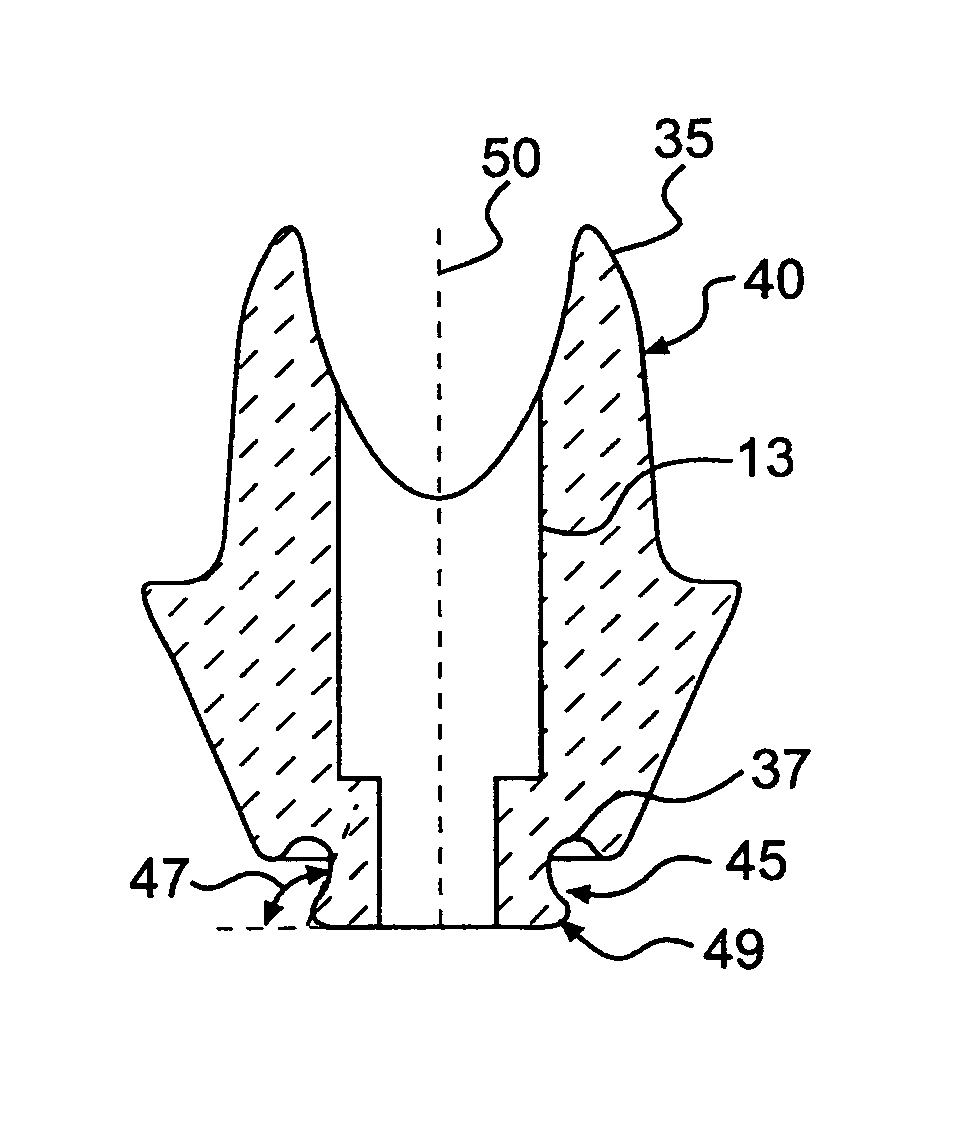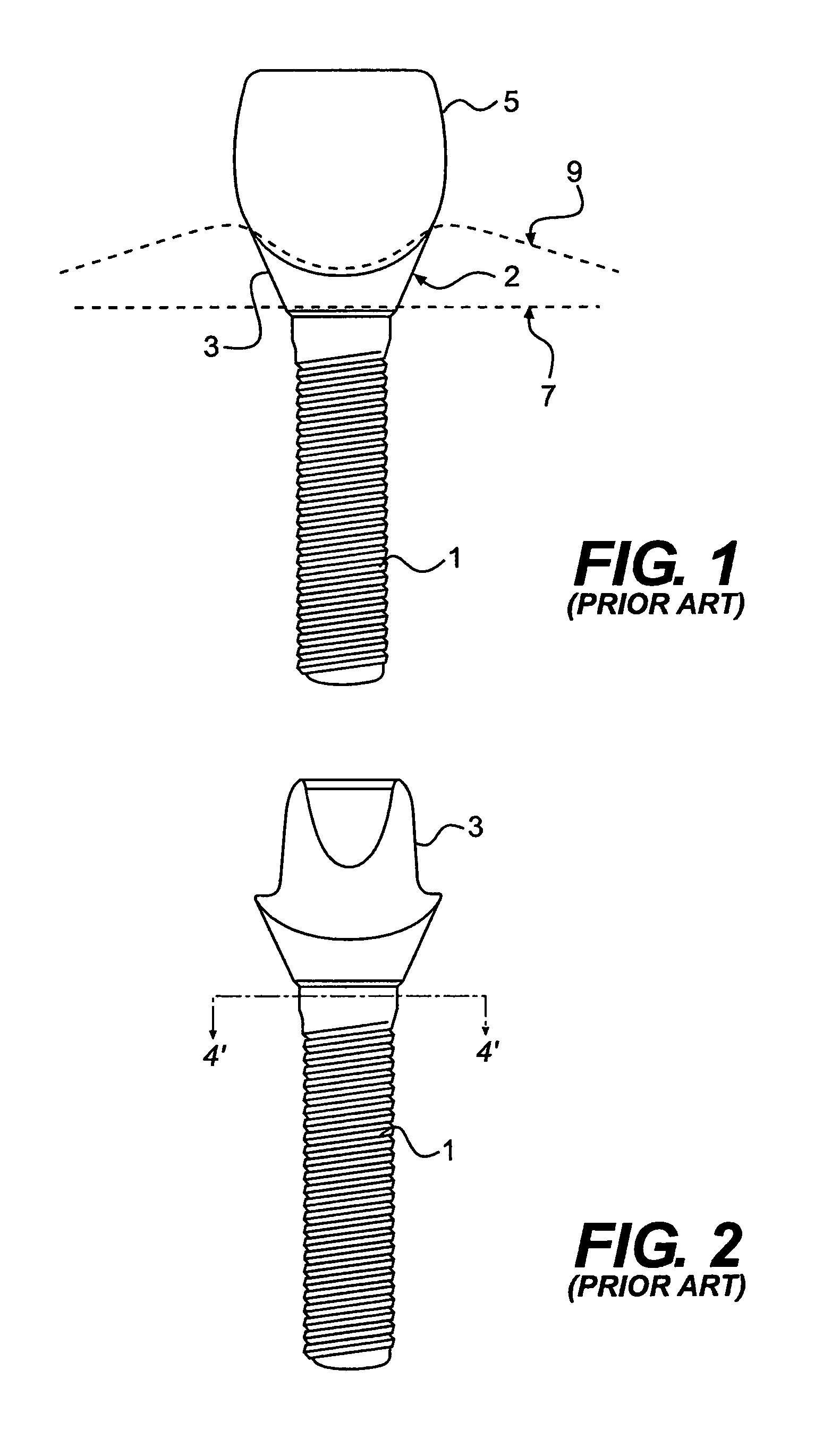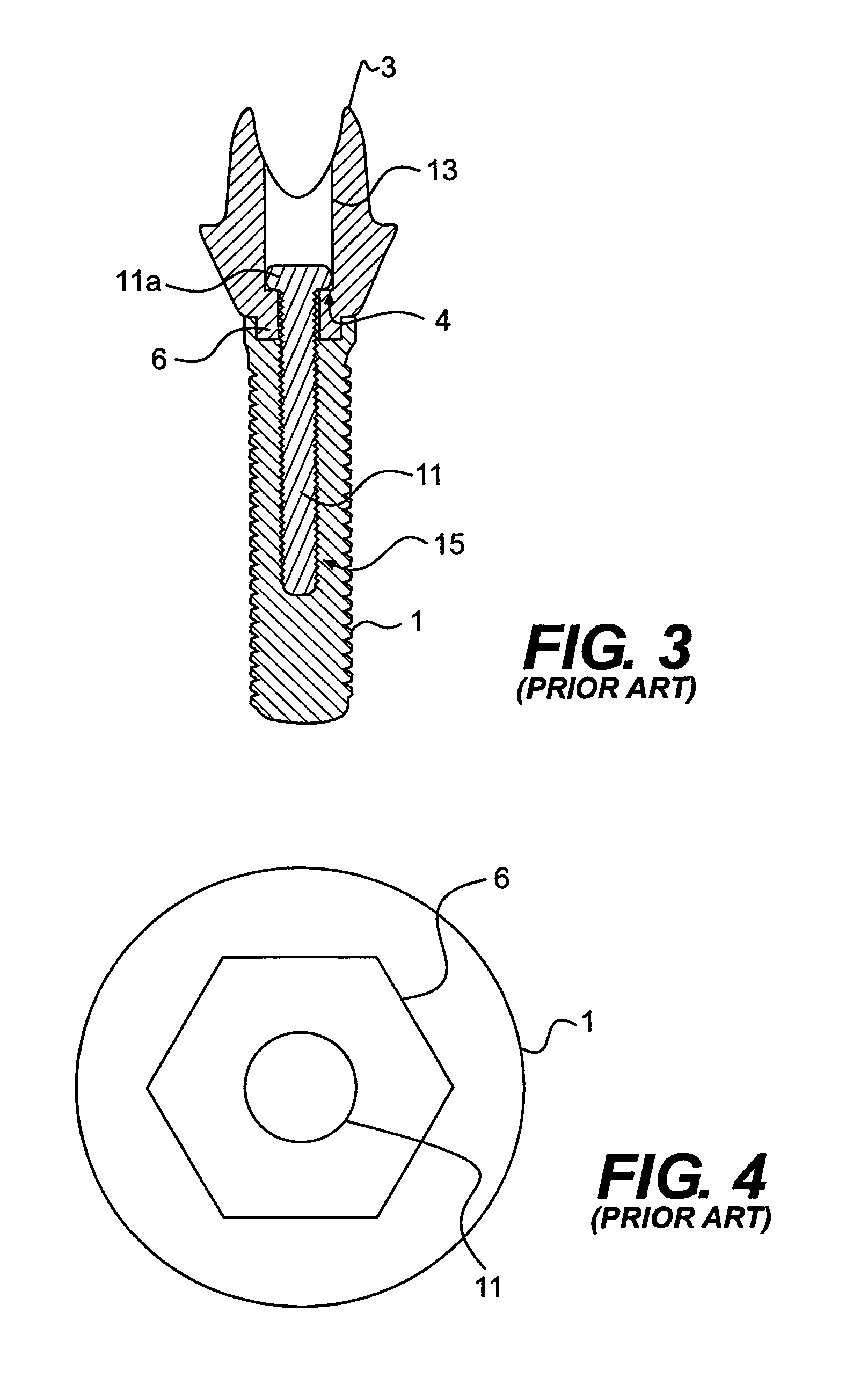Dental abutment including fillet
a technology of dental abutments and fillets, applied in the field of dental abutments, can solve the problems of difficult design of small shapes that resist breakage, high stress on the creation of dental abutments made of ceramics, and high brittleness of ceramics, so as to reduce stress
- Summary
- Abstract
- Description
- Claims
- Application Information
AI Technical Summary
Benefits of technology
Problems solved by technology
Method used
Image
Examples
Embodiment Construction
[0035]FIGS. 1 and 2 illustrate a conventional artificial tooth replacement comprising a dental implant 1, an abutment 3, and a crown 5. In use, the implant 1 is anchored within a jawbone, the profile of which is shown by line 7. The abutment 3 is fixedly attached to the top of the implant 1, as shown in FIG. 2, and serves as an interface between the implant 1 and the crown 5. The crown 5 is positioned over the abutment 3 and is fixedly attached thereto. A tapered portion 2 of the abutment 3 may be positioned below the gum line 9 (as shown in FIG. 1) or at least only partially above the gum line 9. Thus, if the abutment 3 is formed of titanium, the grayish color of the abutment 3 may be visible above the gum line 9 or through the thin soft tissue of the gum just below the gum line 9. The titanium of the abutment therefore may give the artificial tooth replacement an unnatural and generally undesirable appearance.
[0036]FIG. 3 illustrates a vertical cross-sectional view of a typical pr...
PUM
 Login to View More
Login to View More Abstract
Description
Claims
Application Information
 Login to View More
Login to View More - R&D
- Intellectual Property
- Life Sciences
- Materials
- Tech Scout
- Unparalleled Data Quality
- Higher Quality Content
- 60% Fewer Hallucinations
Browse by: Latest US Patents, China's latest patents, Technical Efficacy Thesaurus, Application Domain, Technology Topic, Popular Technical Reports.
© 2025 PatSnap. All rights reserved.Legal|Privacy policy|Modern Slavery Act Transparency Statement|Sitemap|About US| Contact US: help@patsnap.com



